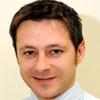
CHILDREN who were encouraged to play and invent their own games outdoors instead of being given PE lessons increased their activity levels by more than half-an-hour each day.
A pioneering trial at seven Glasgow schools found that encouraging primary age pupils to actively play and have fun showed greater benefit than rote physical education classes.
And researchers believe the study, which focussed on the Go2Play Active Play programme, has revealed a new weapon in the battle of the bulge and could help slash obesity rates among the young.
Lead author of the report researcher Avril Johnstone, of Strathclyde University, said: “During school, children are often provided with physical activity opportunities through physical education and playtimes - morning and break, if it’s dry.
“This Go2Play Active Play programme provided children with additional physical activity opportunities, which involved one or two Active Play sessions per week for around six months. These sessions were outdoors no matter the weather.
“Encouraging active play is a novel approach to increasing children’s physical activity levels but has been suggested to have population wide gains if promoted. Active play can be engaged in before, during and after school unlike other physical activity types - PE, active commuting, and sport.”
Medical experts recommend that children should have at least 60 minutes of vigorous physical activity a day, but few achieve this - with serious consequences on their health in later life.
Almost 200 children from seven schools were monitored at the beginning and end of the five month trial for their exercise levels.
Instead of regular PE sessions 172 of the children were given a Go2Play Active Play programme, twice weekly, with 30 minutes of activities such as catching, throwing, kicking, hopping, and jumping.
This was followed by another 30 minutes of free play with basic equipment, such as balls, tennis racquets, hockey sticks, and skipping.
On average children spent three hours of the school day inactive, the study published in Preventive Medicine Reports found.
However after the intervention: “The percentage of time spent in sedentary behaviour decreased by 18.6 per cent and their light activity increased by 15.7per cent and moderate to vigorous physical activity increased by 2.8 per cent - all favourable.”
Miss Johnstone, a researcher in the University’s Physical Activity for Health Group, added: “Active play in general is an under-researched area but there is increasing interest in its potential to increase physical activity and develop movement skills as children can engage in active play before school, during school, after school every day of the year.”
The intervention, now a 10-week programme, is being rolled out in 118 schools across Glasgow City Council.
At Avenue End Primary School, Glasgow, the Active Play initiative has transformed their time out of doors. The grounds of the 299-roll school have been turned into a series of zones where they can learn new skills and explore fresh activities.
Depute Head John Cuthebrtson, said: “I would say it has been very positive. Behaviour has improved, children are actively engaged, keeping fit and the only problem is sometimes equipment. It is keeping them active.”
A spokesman for Inspiring Scotland, which launched the initiative, said: “Active Play is simple: it boosts physical activity in children and helps them develop fundamental movement skills such as coordination and balance, all through playing physically active games.
“High levels of inactivity among Scotland’s children are having a serious effect on their health and well-being and can negatively impact the rest of their lives.
“Children need to be active and they need to play. We are working to make Active Play a fundamental part of the school day in Scotland. It’s play-orientated so it’s fun and children engage in fun activities more than structured activities and, with the sessions being delivered outdoors regardless of weather, the programme encourages children to be active outside more often.”



Why are you making commenting on The Herald only available to subscribers?
It should have been a safe space for informed debate, somewhere for readers to discuss issues around the biggest stories of the day, but all too often the below the line comments on most websites have become bogged down by off-topic discussions and abuse.
heraldscotland.com is tackling this problem by allowing only subscribers to comment.
We are doing this to improve the experience for our loyal readers and we believe it will reduce the ability of trolls and troublemakers, who occasionally find their way onto our site, to abuse our journalists and readers. We also hope it will help the comments section fulfil its promise as a part of Scotland's conversation with itself.
We are lucky at The Herald. We are read by an informed, educated readership who can add their knowledge and insights to our stories.
That is invaluable.
We are making the subscriber-only change to support our valued readers, who tell us they don't want the site cluttered up with irrelevant comments, untruths and abuse.
In the past, the journalist’s job was to collect and distribute information to the audience. Technology means that readers can shape a discussion. We look forward to hearing from you on heraldscotland.com
Comments & Moderation
Readers’ comments: You are personally liable for the content of any comments you upload to this website, so please act responsibly. We do not pre-moderate or monitor readers’ comments appearing on our websites, but we do post-moderate in response to complaints we receive or otherwise when a potential problem comes to our attention. You can make a complaint by using the ‘report this post’ link . We may then apply our discretion under the user terms to amend or delete comments.
Post moderation is undertaken full-time 9am-6pm on weekdays, and on a part-time basis outwith those hours.
Read the rules here